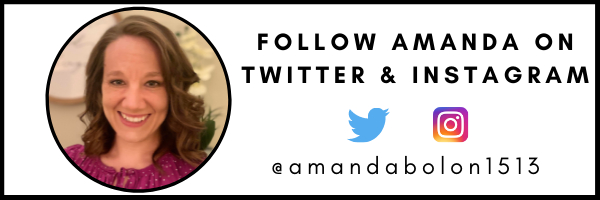TL;DR:
- When implementing The Grid Method with primary grades, consider the physical setup of your room.
- Evaluate your routines.
- Create an environment where failure is welcomed.
- When a student succeeds quickly, or they need a break from learning, allow them to lead.
- Run student-led conferences in your classroom.
Elementary Grids: Tips From Our How-To Guide
Is mastery learning something elementary teachers WISH they could use with their students? Yes.
Are teachers of little ones second guessing how they would EVER be able to implement this framework into their classrooms? Every day.
The world of mastery learning has been seemingly inaccessible for primary educators. The way that it is generally presented makes them believe it is an unattainable goal.
I believed the same thing! It wasn’t until I took a leap that I realized that I could adapt everything to support the way my classroom runs every single day.
Was it easy? No.
Did I stumble and struggle? Absolutely.
Was giving up an option? Not even for a second.
How did I keep going? I saw the benefit of mastery learning in my classroom. My students were making growth across the board, and their independence was soaring. Their learning stamina was building, and they had a belief in themselves that grew before my eyes. All of that was happening, even when I felt like a complete failure.
After using The Grid Method in my classroom for four years, I have learned how to adapt and pivot the setup, instruction, learning environment, and more! In my Teach Better Academy Course “Elementary Gone Grid! Our How to Guide,” I touch on several strategies that have helped to make The Grid Method successful in my classroom. Let’s dive into some specific strategies that I have witnessed throughout the primary grades that have helped educators rock this mastery learning framework, and have brought major benefits to students!
We need to set that example for our students, that we try again when something doesn't work the way we thought it would. Don't worry about your students; they are more resilient than you believe. Share on XElementary Grids: Organization
There are a million different ways to organize the grid itself, the classroom, and your routines to make things run smoothly. The biggest tip I can give you is to look at what you are already doing that works. Are you seeing success with flexible seating? Continue using it. Do you have an organizational system that keeps everything in your classroom organized? Utilize it. There is no reason to throw out everything you are doing. Adapt what you use successfully to fit into your mastery learning classroom.
If you are starting from scratch and have no idea how to organize things, below are some helpful tips to get started.
1) Think about the physical setup of your classroom.
This means everything from seating arrangements to where supplies are located. Make sure the flow of your classroom is conducive to learning and doesn’t hinder the process. Students should have easy access to everything they will need for their learning objectives. Put papers, crayons, glue, technology, and more at their eye level so they aren’t bothering you or others needing help getting what they need.
Seating also plays a big part in the learning environment. If your district allows flexible seating, try it out. Students will get to try focusing on learning from different seats or locations. In my classroom, students have been able to sit anywhere they like as long as they are focused on their learning goals and working toward them. Perhaps flexible seating isn’t possible in your classroom. Use strategic seating to help students focus, all while having access to a friend who may be able to help them in a pinch. You’ll be able to do this once you understand what helps certain children, and what distracts them.
2) Evaluate the routines you currently use in your classroom.
When you have consistent routines, students can settle into a learning groove.
One major organizational system that you learn about with The Grid Method is the triage system using cups, clips, or technology.
RED: allows students to tell you the need help because they are stuck.
YELLOW: gives students the chance to let you know they have a question, but that they can continue working while they wait.

GREEN: gives you the assurance that a student is doing just fine and really doesn’t need to be interrupted while they are learning.
BLUE: (a cup that I added) makes you aware that the student is finished with their task and their work needs to be checked.
This system isn’t just beneficial during grid time, but across the board. If you use it all day long, students will easily adapt to the process and it will become second nature.
Elementary Grids: Building Learning Stamina
Young students are building the plane while flying it. That is, they are learning how to be successful in school while being in the school environment. The biggest hurdle we face as educators is teaching learning stamina in young children. Their attention span is so short, and they are so used to being constantly entertained by technology. We get so frustrated that children don’t know how to be students when they walk into our classrooms, but the truth is, it is something we have to teach that is perhaps more important than the content.
1) Create an environment where failure is welcomed.
Nobody wants to be the kid that messes up in front of their peers. Children are quick to make fun of others when the culture of the classroom isn’t one of support. Growth mindset is crucial when implementing this mastery learning framework. Students need to know that it is okay to mess up or to not understand something. Not only that, they need to be able to communicate their misunderstandings without fear of ridicule from students or teachers.
One way to do this is to show your own “failures” to students, and model how to work through those. I verbally talk out issues that arise, and I always make sure to let students know that everyone messes up. When I don’t know an answer to something, I show them that I ask others, or I do research to figure it out. Building this into daily routine with students is important to building an environment where students feel okay to “fail.”
2) Start slow to go fast.

Understand that students at this age are not built for sitting for long periods of time. We can’t expect them to work on a task for 30 minutes without knowing that there will be frequent movement, lack of interest in the task, and even some quitting in the process. This is why it is important to build up learning time incrementally. We talk about reading stamina, and how students need to practice reading independently in order to be able to focus for long periods of time. This doesn’t only apply to reading. That’s why our mini-lessons at this age level should be 10 minutes or less. Focus needs to be built as a whole.
Start slow. When implementing a grid, start by guiding students through a task. By modeling how to work through a learning objective, it lets them see that there is a process. You may also decide to only have students work on their grid independently for 15-20 minutes before taking a whole-class brain break. Realize that they will be very needy when you first start this framework, asking lots of questions and having an unwillingness to try something that seems hard. Once your students master this level of independence, you can lengthen the work time and raise expectations.
Elementary Grids: Student Leadership Opportunities
Students in a Grid Method classroom are learning to take ownership of their learning. With ownership should also come opportunities to use what they have learned to lead others. Students become facilitators, whether they know it or not. Giving them the chance to be a leader will also help with the organization of the classroom, and building stamina for learning. There are a few times when allowing students to be leaders can be a huge benefit, not only to that student, but to others.
1) When a student succeeds quickly, or they need a break from learning, allow them to lead.
It may be obvious to allow a student to lead when they understand the content. That student will be a huge help to you as an educator, giving them the chance to answer any questions that arise and you more time to meet with students who need it the most. A lot of yellow cup questions are process or technology related, and it helps tremendously when students can run that interference for you.
The less obvious leader in your classroom is the student who needs a break. So many factors go into loss of focus. Two major ones are not understanding the work and problems outside of the classroom. We all know the students who struggle, and if we push them too hard, they shut down. You will be able to easily identify when they are near that breaking point, and you can give them a chance to do something that will take their mind off of it. Let them answer questions about technology or the process of tasks they have already completed. Give them the job of being the liaison between students with red cups and you. They can ask a student what they need and refer them to you, or to a classmate who might be able to help them. Even if their job only lasts five minutes, it can be a huge mental help to that student.
[scroll down to keep reading]2) Run student-led conferences in your classroom.

Parents love to know what their students are doing at school, and we can provide them with a first-hand look into their child’s world. Use the information that you and your students collect from using grids in student-led conferences. Children can take items, like their grid, work they are proud of, and any data charts they populate, and show their parents their progress. This means that they lead the bulk of their conference, and you are simply facilitating the conversation when needed. Sounds awfully similar to your job as an educator in a Grid Method classroom, doesn’t it? This builds independence in students and allows them to take charge of their learning in all aspects, in the classroom and with their families.
Elementary Grids: Doing What Is Best for Your Classroom
These tips all come from what I have learned over the last four years of implementing grids, and from what I have witnessed in other primary grid classrooms.
Will all of these tips work for everyone? No.
Do you have to figure out what works best for your classroom and your students? Yes!

I can give you all of the tips of the trade, but you have to evaluate what your students need. That will change depending on grade level, and even from year to year in the same grade level. You’ll constantly be adapting and changing your practice to benefit your students, especially as you learn more firsthand.
As someone who still makes changes every year, and even from grid to grid, I want you to know that it is okay to not get it right. It is okay to call an audible when something is not working. You are allowed to fail. What you are not allowed to do is quit trying. We need to set that example for our students, that we try again when something doesn’t work the way we thought it would. Don’t worry about your students; they are more resilient than you believe.
If you have any questions, or need a little bit of a pep talk, feel free to reach out! You can also check out the following blog posts for more information (Elementary Mastery Grid Tips and Tricks & Primary Independence: How The Grid Method Can Work for Littles).
About Amanda Bolon
Amanda is a coffee-obsessed second grade teacher from southeast Ohio. She enjoys teaching littles and thinking creatively to help her students learn. Amanda thrives on collaboration with peers in order to someday achieve her goal- change the world, one student at a time! Amanda is also the Community Relations Manager for the Teach Better Team. She couldn’t do what she does without the support of her amazing husband Drake and her dog Lily.




